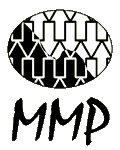Selecting Communities
The process of selecting communities for the Mexican Migration has traditionally relied on anthropological methods. Communities are chosen after a personal reconnaissance of the geographic area to be studied by the principal investigators. Because the project initially focused on Western Mexico, the traditional heartland for migration to the United States, practically all of the earliest communities had significant indices of out-migration, which could easily be detected using field interviews and simple observations of the frequency of new homes, foreign license plates, currency exchanges, and international courier services.
Until 2000, we lacked access to a valid measure to indicate the intensity of emigration from specific municipalities and the only measure indicating migration was the sex ratio. The only demographic fact regularly considered was the community’s sex ratio, which offer general picture of the intensity of the process of international migration because in Mexico emigration is so heavily male. After an initial round of fieldwork, investigators compared their preliminary data with census statistics and formation available from bibliographic sources. However, the MMP has never explicitly sought to survey only communities with high rates of out-migration. Investigators simply seek to corroborate that there is some migration from the community in question before proceeding. Then they select four specific locations to represent each of four levels of urbanization: ranchos, with fewer than 2,500 inhabitants; pueblos (towns), having 2,500 to 10,000 inhabitants; mid-sized cities containing 10,000 to 100,000 inhabitants; and finally, a metropolitan setting, usually a particular neighborhood within in a state’s capital city or some other large city.
In the pueblos and ranchos, investigators conduct a complete census of dwellings and undertake random selection from the resulting list. In mid-sized cities and urban metropolises, investigators generally chose a traditional, well-established neighborhood–one not dominated by recent rural-urban migrants. As a result, the urban samples are in reality samples of urban n neighborhoods or specifically demarcated quarters. In all cases, the neighborhood must have at least 1,200 enumerated dwellings, from which a random sample of 200 is taken.
The methodology of the MMP thus yields results with a high degree of representativeness at the community level, and in some of the smaller pueblos and ranchos investigators have been able to survey every household in the community. Given that the sample is not targeted to migrants per se, but surveys the community as a whole, the project needs a fairly large sample size to generate a significant number of migrants. Traditional methods of cluster sampling generally survey small numbers of respondents across a large number of areas, but this generally yields small numbers of migrants to study an inability to make generalizations at the community level. For example, rather than interviewing 20 households in five communities we interview 100 households in one community, thereby enabling us to make generalizations about migratory processes at the community level. If the frequency of migration is 30%, on average the surveys would contain only six migrants in each of the five communities, rather than 30 migrants in one community.
At present we are able to draw upon an index of migratory developed for municipalities in Mexico’s National Population Council (CONAPO) based on the 2000 and 2010 census. This index provides reliable information about the level of U.S. migration prevailing at the municipal level and is particularly useful in identifying new communities of origin for migrants in new sending states, where heretofore little information has been available. In sum, after 25 years of field experience, the MMP continues to use anthropological criteria for selecting communities, which are then corroborated with available data from the census and other sources to confirm the existence of migrants before making the final selection.
|



